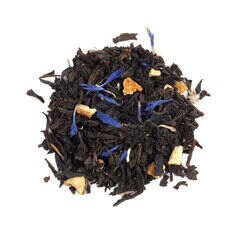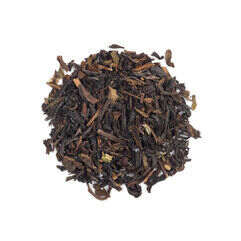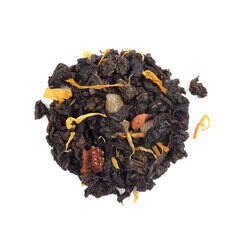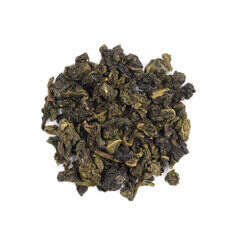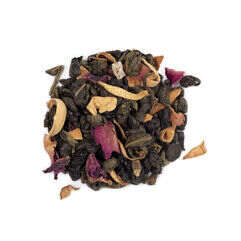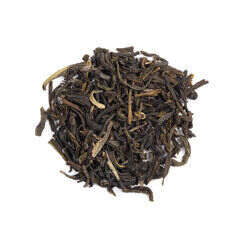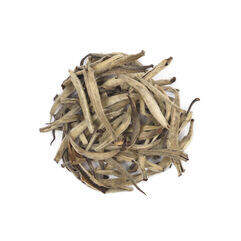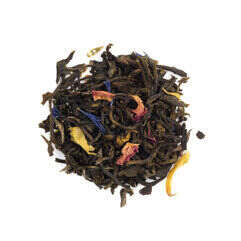Which Tea is right for you?
Do you know what it takes to make tea? Or that all these different teas come from the very same plant? The different colours, tastes and flavours are all down to how and where the tea is processed. Learn something new about your favourite blend and how it's made.
Black Tea
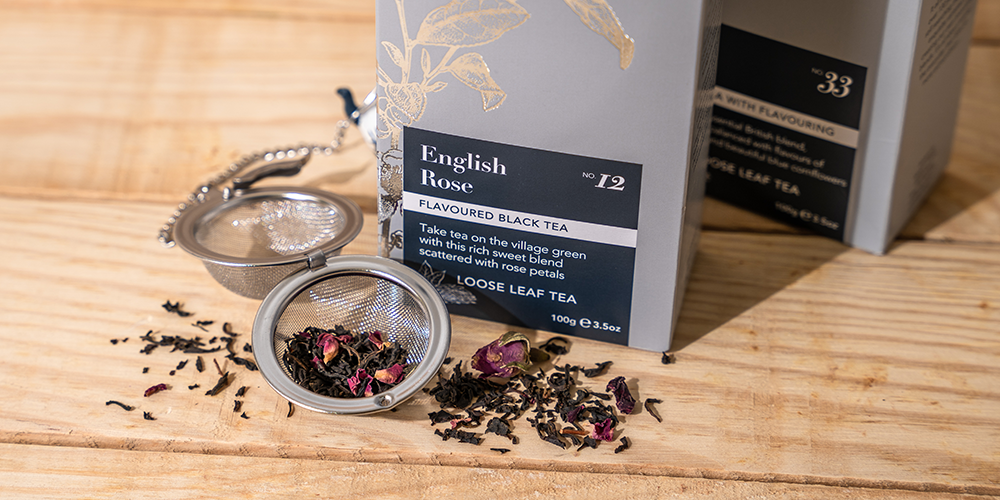
Taste:
The taste very much depends on the region from which the Black tea is from, Assam, compared to Kenya, for example. The tea's richness and depth are perfect for adding flavours, which is why we love them so much. Our Black teas often contain fruit, spices, and even colourful flower petals to compliment the tea's deep and abundant flavour.
Process:
Black tea must be withered, which reduces its moisture content, rolled either by a machine or by hand, oxidised, and then dried, usually in an oven. The most essential and flavour changing part of this process is oxidising. A Tea master must be able to judge the perfect amount of time for his tea to oxidise. Sometimes this is done by just smelling the tea. After oxidisation, the tea is then oven dried. However, some Black teas are pine smoked for added flavour, such as Lapsang Souchong. Black tea may look plain on the surface, but look closer, and it has so much more to offer.
Best selling Whittard Black teas:
Oolong Tea
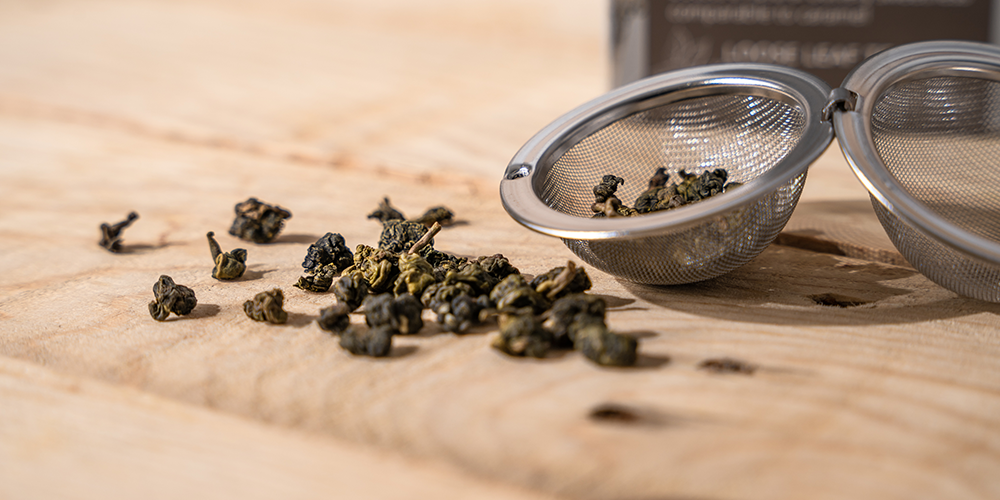
Taste:
Oolong can vary in taste depending on its origin and, more surprisingly, how the tea is rolled. A Green Oolong has a buttery, floral flavour, whereas Dark Oolong has a more nutty and chocolatey aroma. There are then Oolong teas that are flavoured with exotic fruits and spices. Over the years, we have created some beautiful Oolong blends, some with the most unusual flavours.
Process:
Oolong Tea is picked throughout the year and goes through one of the more complex processing methods to capture various flavours. The tea is withered for a short time but often goes through this process up to three times. The tea is then left to sweat in a room of 80% humidity whilst being tossed around, giving an even exposure. This is comparable to being in a steam room attached to a rollercoaster. The Oolong is then oxidised; the Tea Master controls this. It is then shaped into either a long curly leaf or a ball with a tail. These small balls beautifully uncurl when they infuse with hot water, providing a bit of theatre with your tea.
Best selling Whittard Oolong teas:
Green Tea

Taste:
Green tea is the oldest and most diverse in taste. Most Green teas have a deliciously fresh, familiar and buttery aroma. However, this flavour can change depending on the soil quality, the origin of the tea and particularly the oxidisation process. Green tea is also frequently flavoured to create unique aromas such as Cherry Blossom or delicately scented with flowers, including evening blossoming Jasmine. Matcha tea is Green tea that has been milled to a powder. It requires a different preparation method, which helps enhance the creaminess of the tea.
Process:
When creating a Green Tea, the process is key to bringing out different flavours. Most Green teas are withered. This makes them more malleable so that they can be shaped with ease. Chinese Green Tea is usually put through the panning process, but Japanese Green tea is mainly steamed; this changes the flavour considerably. Tasting the difference between Chinese and Japanese Green tea is an essential skill if you are a tea lover.
Best selling Whittard Green teas:
White Tea
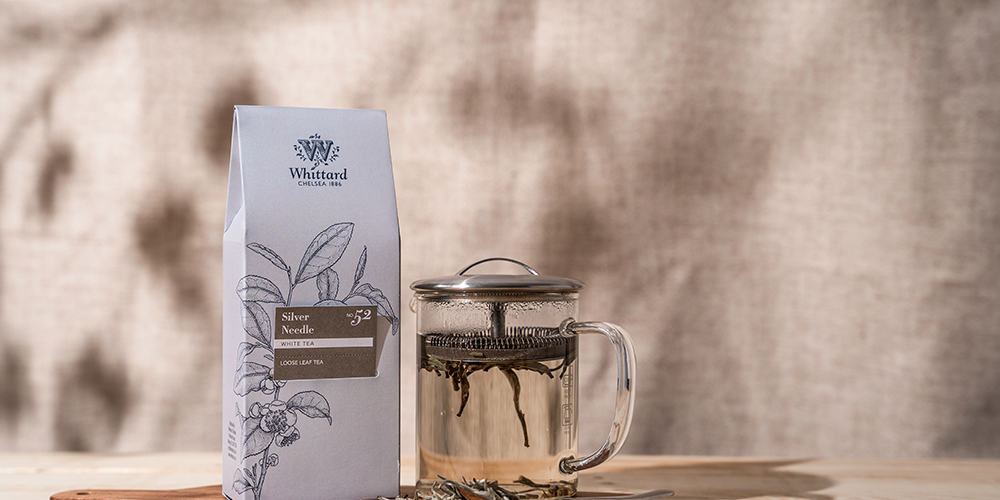
Taste:
White tea is the most modern tea available to us. Being only two hundred years old, it's a baby compared to Green tea. White tea gets its name from the tiny hairs on the unopened buds of the tea leaf, and its taste is a sweet and fruity one. It is often flavoured, and it goes perfectly with white chocolate.
Process:
White Tea only goes through two processes, withering and drying. Unlike most teas, they are not shaped and often spend more time in the withering process. Some White teas are left for days to wither. Traditionally White tea is left to dry in the sun. However, this can be unpredictable, so more modern techniques are being used, such as blowing hot air over the leaves or carefully using ovens to control heat accurately.
Best selling Whittard White teas:
Whittard of Chelsea are passionate about tea, and we've provided customers with new and exciting blends for over 135 years. We pride ourselves on our tea knowledge and variety; our range is constantly changing and growing. If you've learned something new about the different teas we have on offer and your taste buds are tingling to try them out, then why not explore our tea range with over 130 teas for you to try. Enjoy!
Make a Tea Discovery



